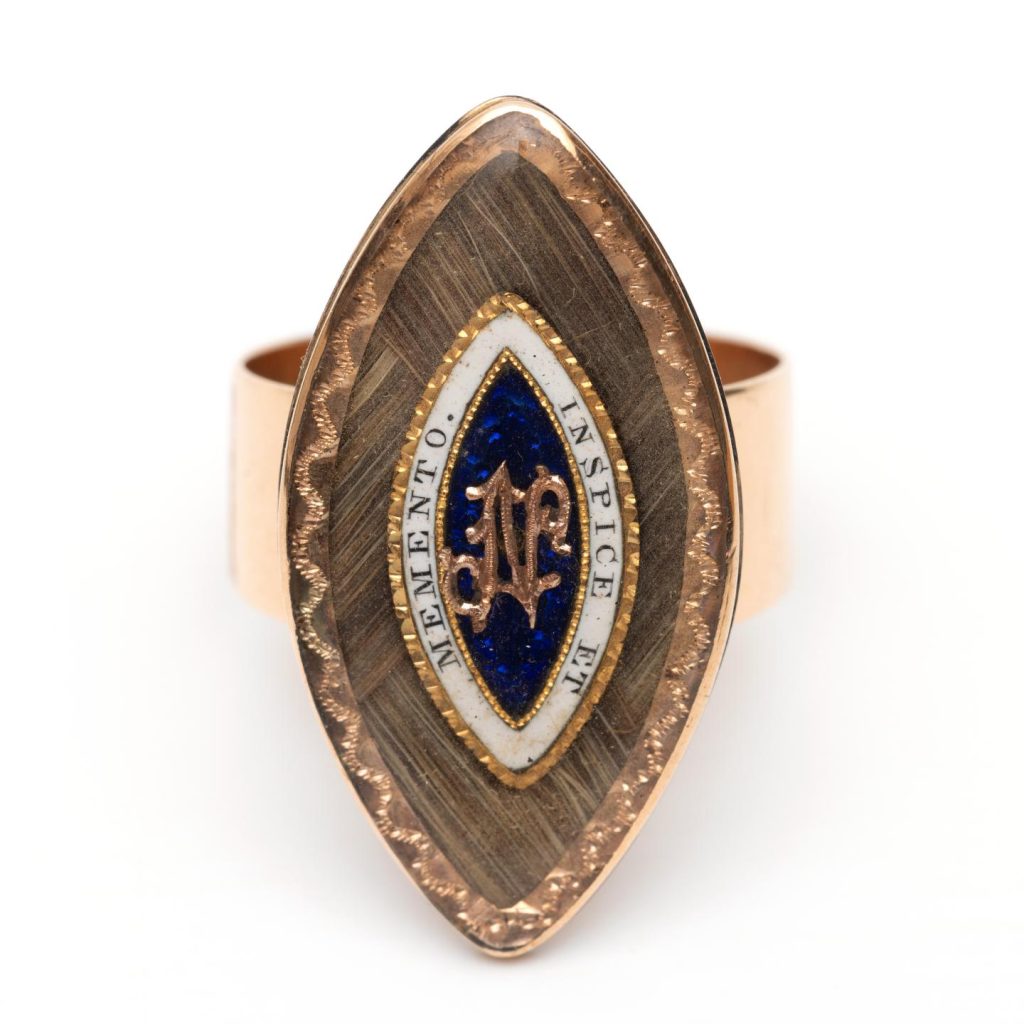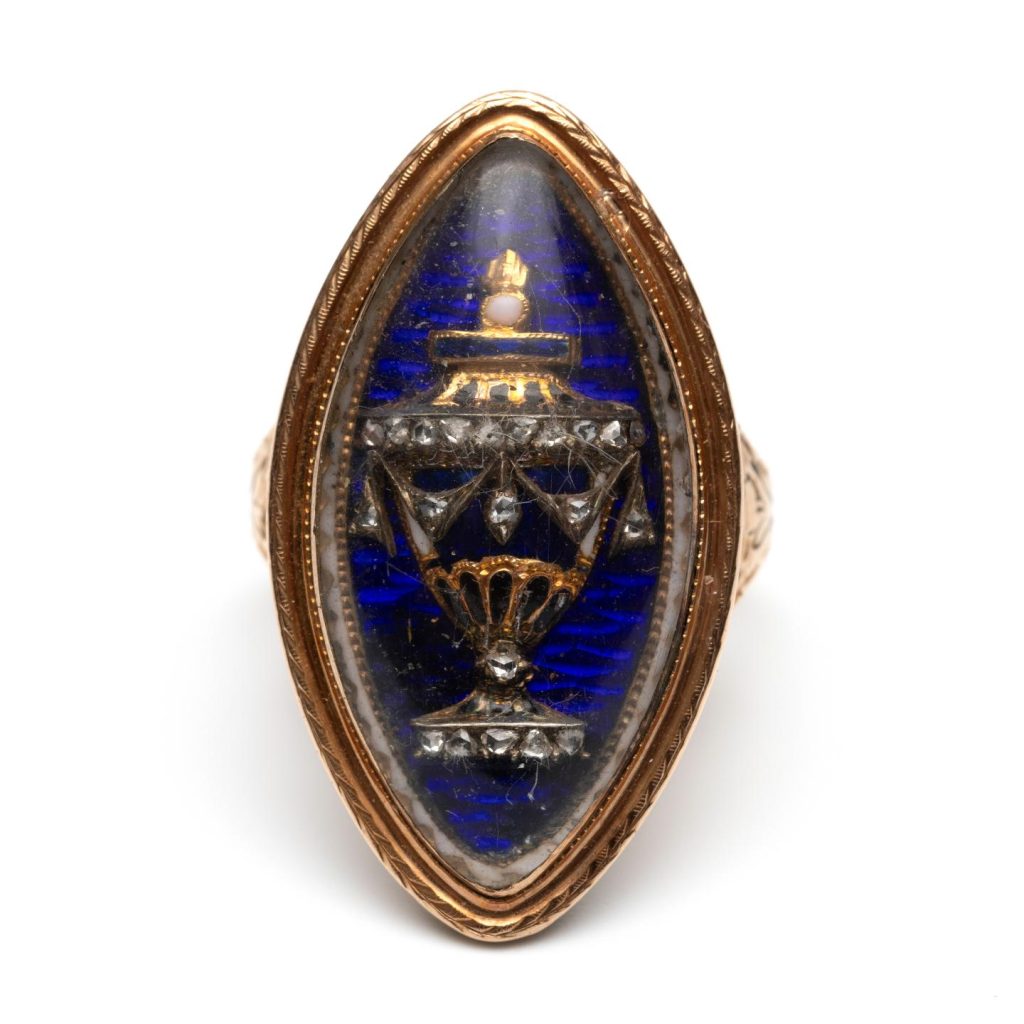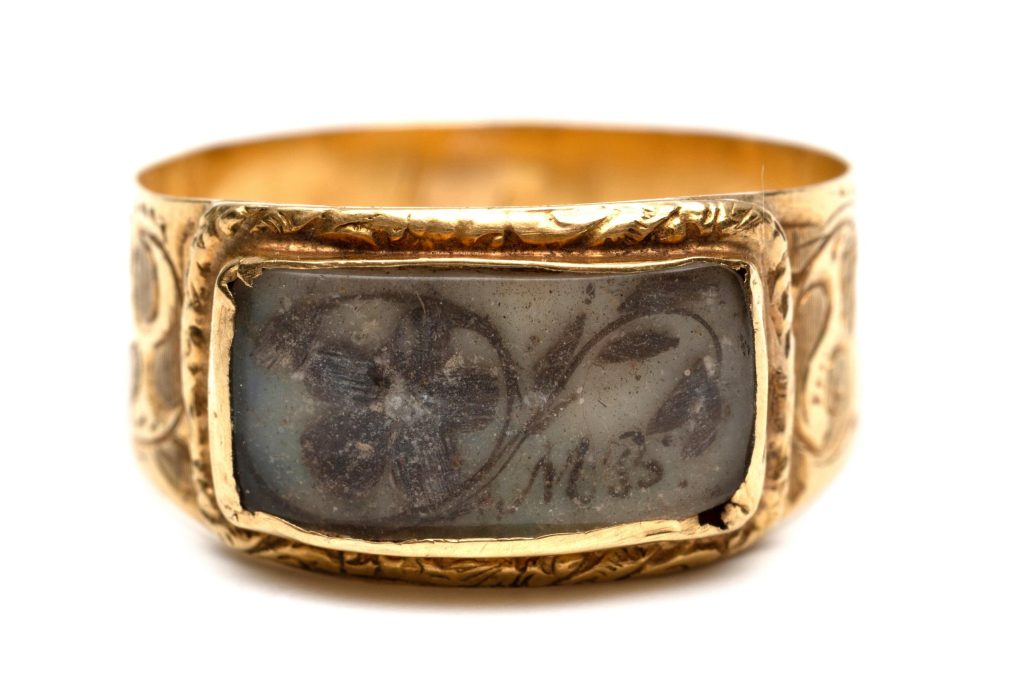Four special mourning rings
For as long as people have honored their deceased loved ones, jewellery has been made and worn as a way to remember them. This can be simple jewellery with just a name and/or date of death, but in many cases also true works of art, including portraits or symbols and set with precious gemstones or enamel.
The Memento Mori piece of jewellery has been fashionable from the late Middle Ages to the end of the seventeenth century. A jewel, provided with bones, skulls or a whole skeleton, which reminds the wearer that earthly life is only temporary. We see this change over the course of the eighteenth century. In the rococo period, rings were still centrally set with a piece of cut rock crystal (so-called Stuart Crystal, named after the House of Stuart) including a skull. The shank is made up of asymmetrical cartouches that show the name, date of death and age of the deceased (lot number 5). At the end of the 18th century, under the influence of the Enlightenment and later Romanticism, this changed. Skulls and skeletons are replaced by urns, weeping ladies, symbolic animals and flowers. The direct references to death are softened in their formal language.
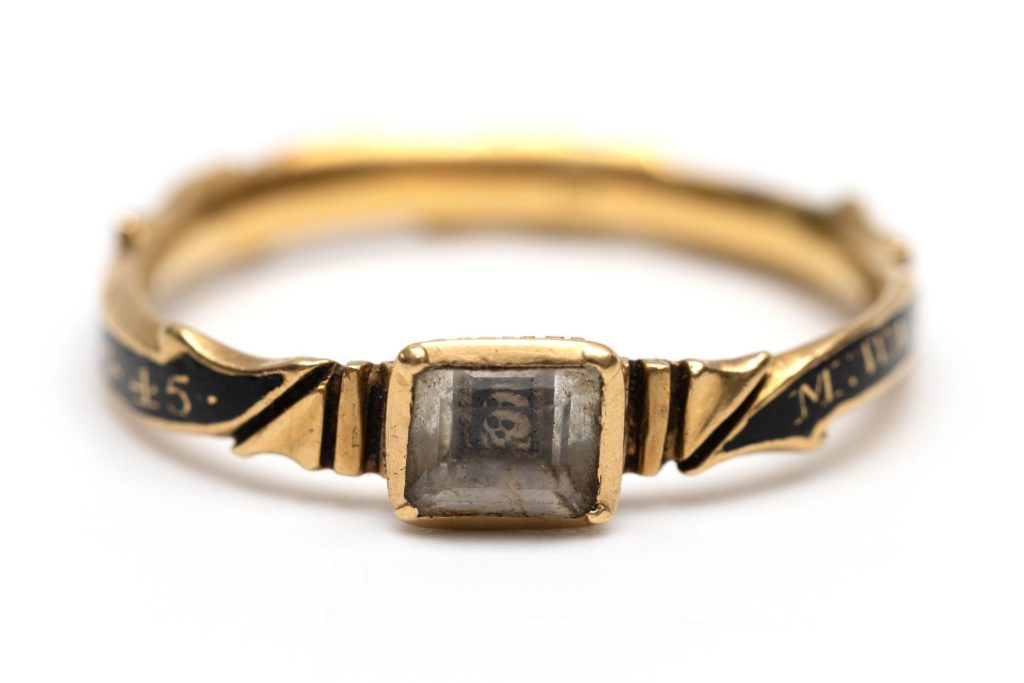
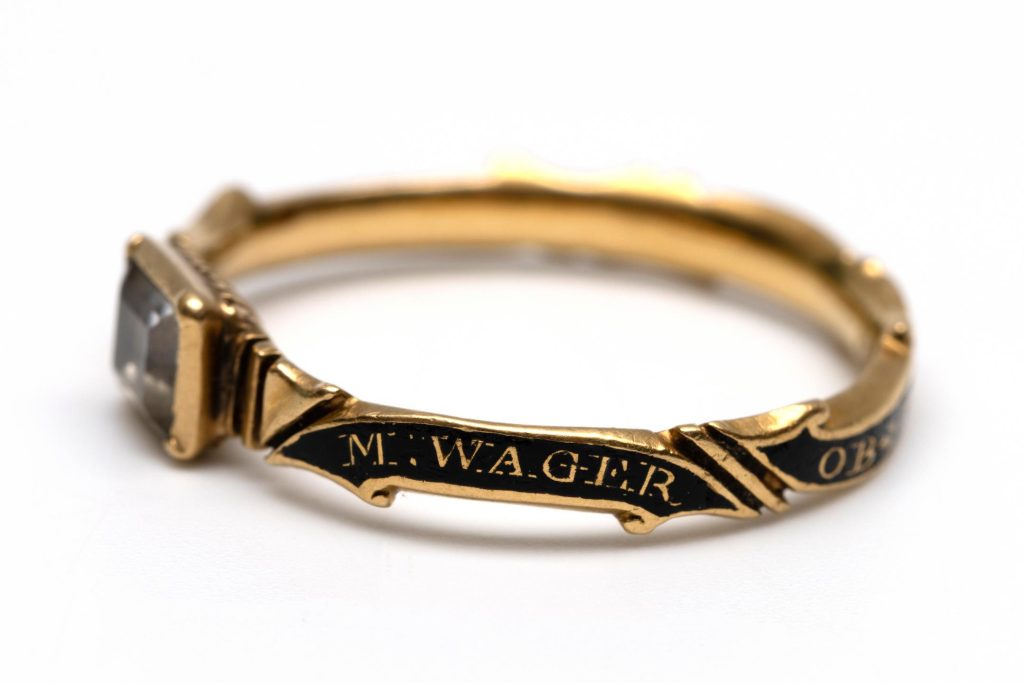
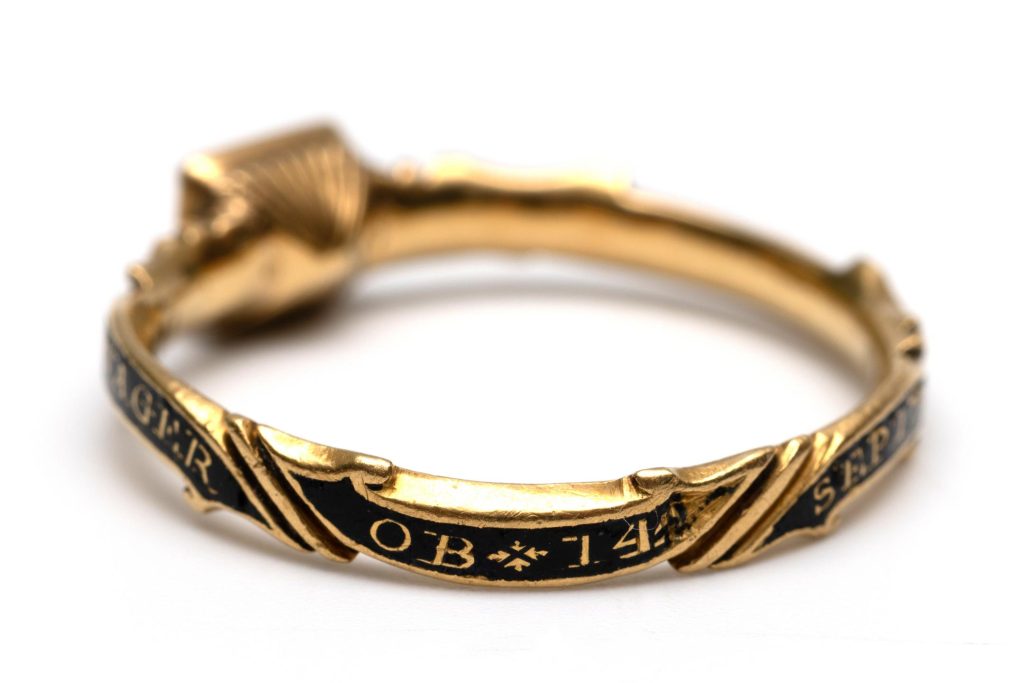
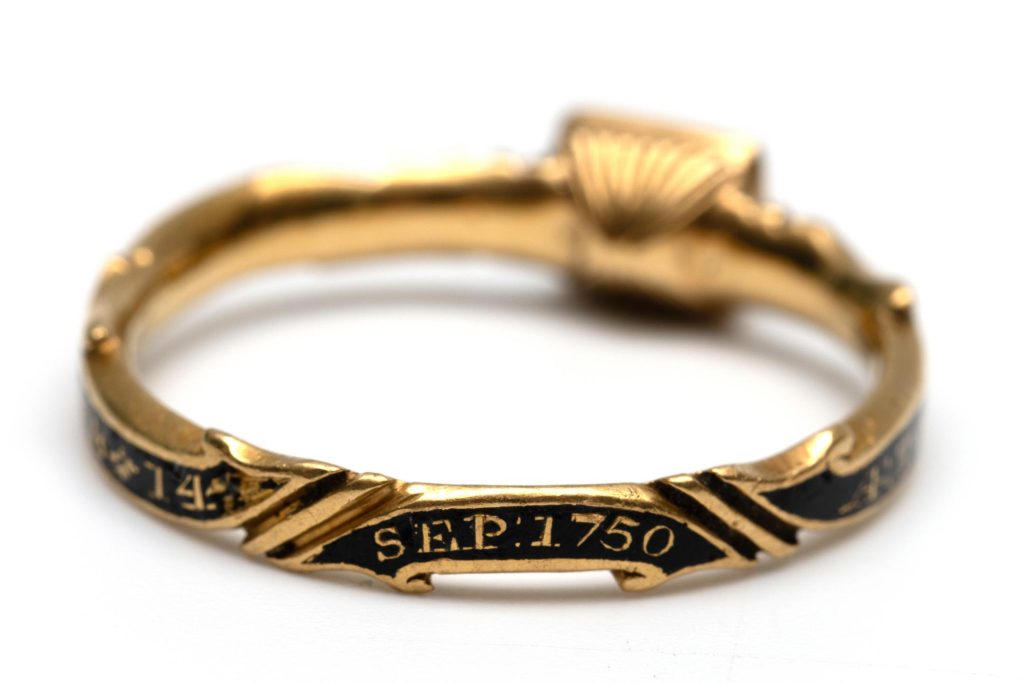
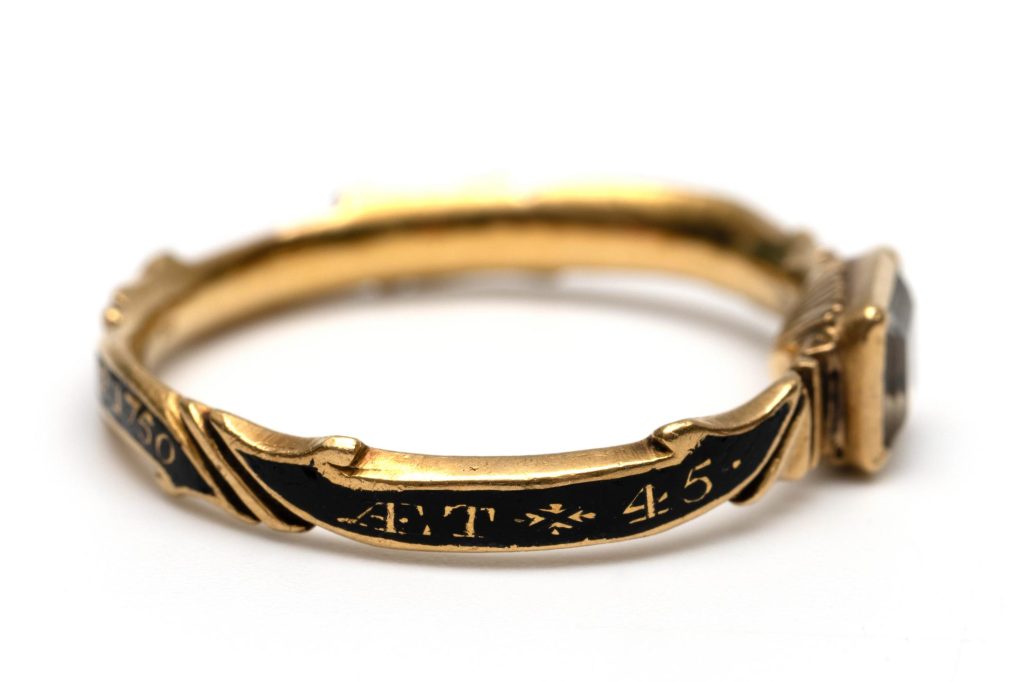
Lot numbers 9 and 10 are good examples of this. Both are marquis-shaped rings, dating from the last quarter of the 18th century. The first ring (lot number 9) shows a gold monogram in the center, surrounded by the text ‘Inspice et memento’, ‘Behold and remember’ in Latin, surrounded by braided hair. It is a very direct reference to the deceased to be remembered. Hair does not decay and is therefore very popular in the use of mourning jewelry. The second ring (lot number 10) shows a rose-cut diamond urn set on the front against a background of blue enamel. The inside of the ring shows hair woven behind glass around which the details of the deceased are engraved.
The last ring (lot number 11) dates from the first half of the 19th century. The hair of the deceased is also incorporated here, but now in the form of a forget-me-not next to which the initials MB.
